- Written by: vinay
- March 26, 2025
- Categories: AI for Retail
- Tags:
Betting on You: How AI Understands Your Shopping Preferences
AI-Driven Personalization Cycle
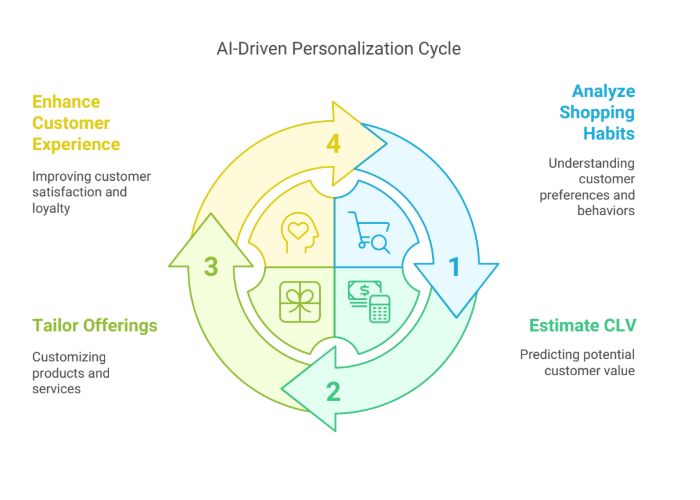
Have you ever walked into a café and felt like they just get you? That little surprise of a free latte when you’re on the fence about ordering? Or how about that online store that seems to know exactly what you’d love? It’s not magic; it’s smart technology that dives deep into your shopping behavior. By estimating your Customer Lifetime Value (CLV)—essentially a guess at how much you might spend over time—stores are not just selling products; they’re placing a bet on you. They sprinkle in personalized nudges to make you feel recognized and valued, transforming a simple sale into a genuine connection.
Behind this clever setup lies a kind of digital fortune teller. Picture a system that reviews your past purchases—not just today’s $20 treat but also that cozy trio of sweaters you bought last fall or your annual sock shopping spree every December. It combines this data with predictive analytics, whispering insights like, “Hey, you might be a $500-a-year shopper.” With such knowledge, stores can roll out custom deals or exclusive perks, making you feel like a VIP.
Take Target, for instance. After just a few purchases of baby items, their system identifies you as a key customer and sends diaper coupons right when you need them. It might feel a bit uncanny or even intrusive, but it’s really just smart marketing—anticipating your needs instead of bombarding you with generic ads. If you’re intrigued, there are even tools available that let you peek into your own shopping forecasts.
Targeted Marketing Cycle
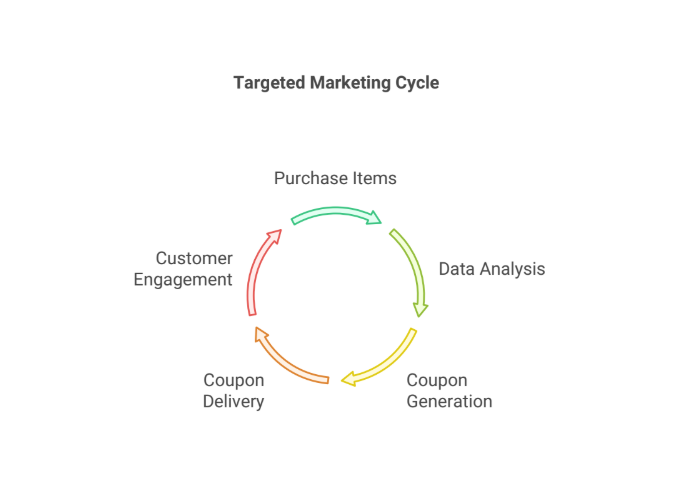
So, why does all this matter? Understanding your potential value changes the game entirely. Instead of sending out one-size-fits-all promotions, brands can focus on the customers who truly matter. Reports suggest that when companies leverage loyalty data, their revenue can increase by 5-10%. This means they treat regular customers like VIPs rather than just chasing one-time sales. For you, this personal touch translates into better deals tailored to your preferences and less clutter in your inbox.
Real-world examples abound. Target’s system, for instance, has famously detected shifts in buying patterns—like pairing diapers with lotion—to predict significant life changes, effectively locking in new parents for the long haul. Starbucks also gets in on the action, rewarding you when you hit that tenth latte. Even smaller businesses can benefit: a local pet store might recognize a “cat lady” who spends around $200 a year and surprise her with a free toy on her next visit, or a candle maker might send a “VIP” discount to a loyal gifter. It’s not just the big players; even the little guys are using affordable tools to play smart.
Customer Loyalty and Business Size
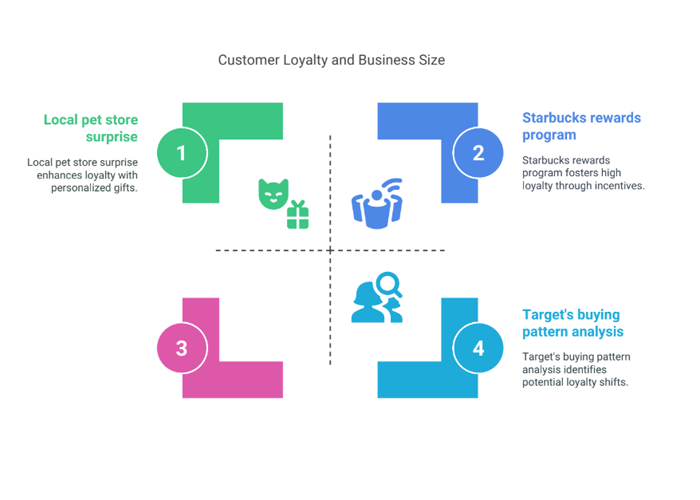
At first glance, analyzing your shopping habits might seem simple—like dividing total spend by the number of visits—but it quickly becomes more sophisticated. AI looks for patterns, such as that Friday splurge or skipping a big sale, and ties all that data together using machine learning techniques honed on countless shopping journeys. This means that even if you make a $100 purchase during a live session, your predicted value might update by the end of the day, prompting a “high roller” tag and a loyalty email by morning. Today, even small shops can set up a dashboard and join the game without needing a PhD.
For retailers, focusing on your long-term value is like discovering hidden treasure. They know that 20% of their customers often generate 80% of their profits, so they may overlook a one-off $5 purchase but shower attention on a $200-a-year regular. Studies indicate that retention rates can increase by 5% to 25% when strategies are informed by these insights.More than just a smart tactic, it’s about creating a sense of care—like a friend who remembers how you take your coffee.
Retail Loyalty Cycle
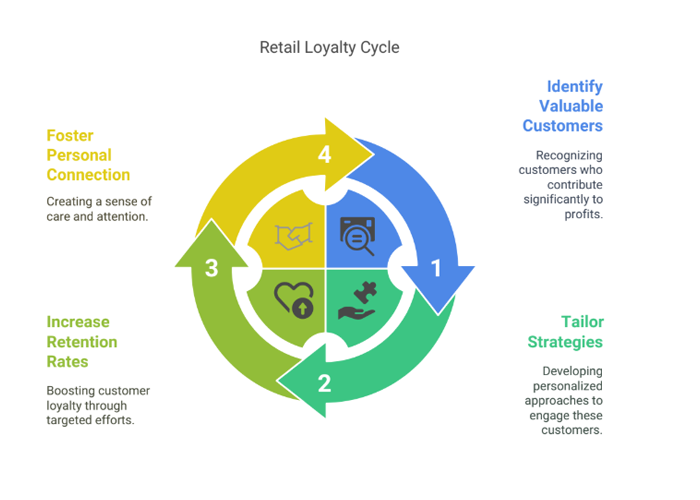
Looking ahead, the personalization of shopping experiences is only set to grow. Soon, you might encounter chatbots casually saying, “Hey, you’re due for some coffee—here’s $2 off,” or receive a text saying, “Missed you—your favorite socks are 10% off today.” It’s no longer about static loyalty programs; it’s about nurturing an evolving relationship where the store’s understanding of your habits makes each offer feel uniquely crafted for you. Small businesses can really thrive—turning a $50 customer into a $500 superstar with just the right encouragement. It’s not just about technology; there’s something deeply personal at play. Imagine a small shop using AI to foster customer loyalty—it’s like watching the underdog pull off a stunning victory.
Enhancing Customer Loyalty
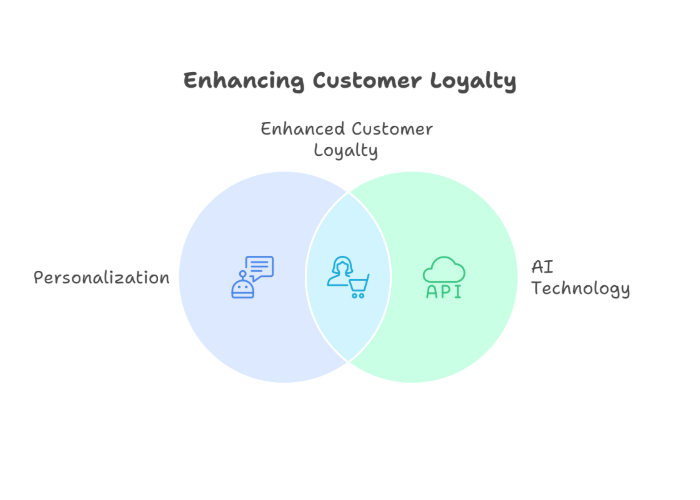
Now it’s your turn to engage. The next time a store goes the extra mile for you, consider the clever AI strategies behind their customer care. Enjoying that VIP treatment? Show some love to the brands that invest in you. And if you’re curious about discovering your own winners—whether in retail or beyond—give these tools a try to see how they highlight the stars. Oh, and feel free to share what loyalty perk keeps you coming back for more!



